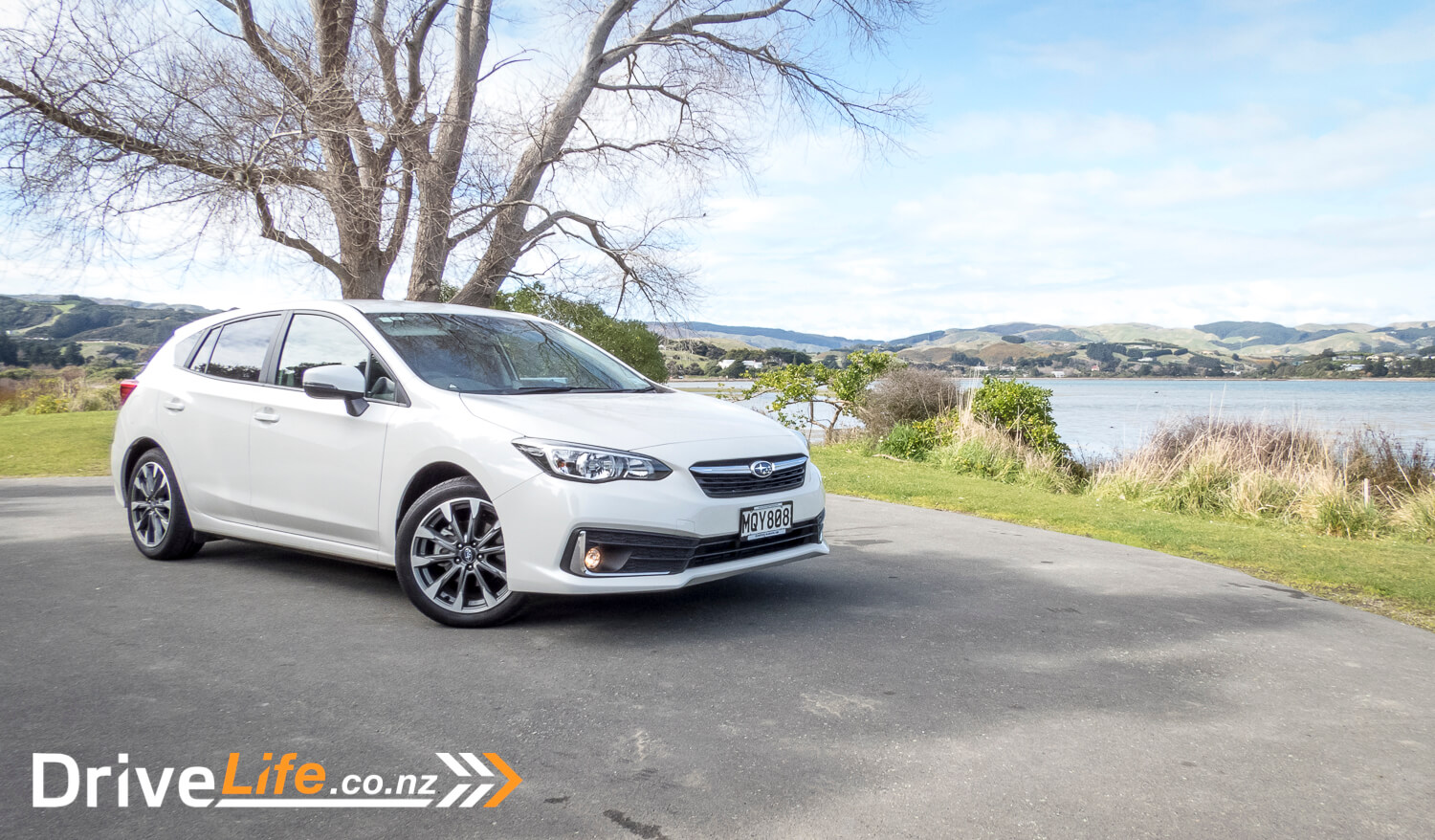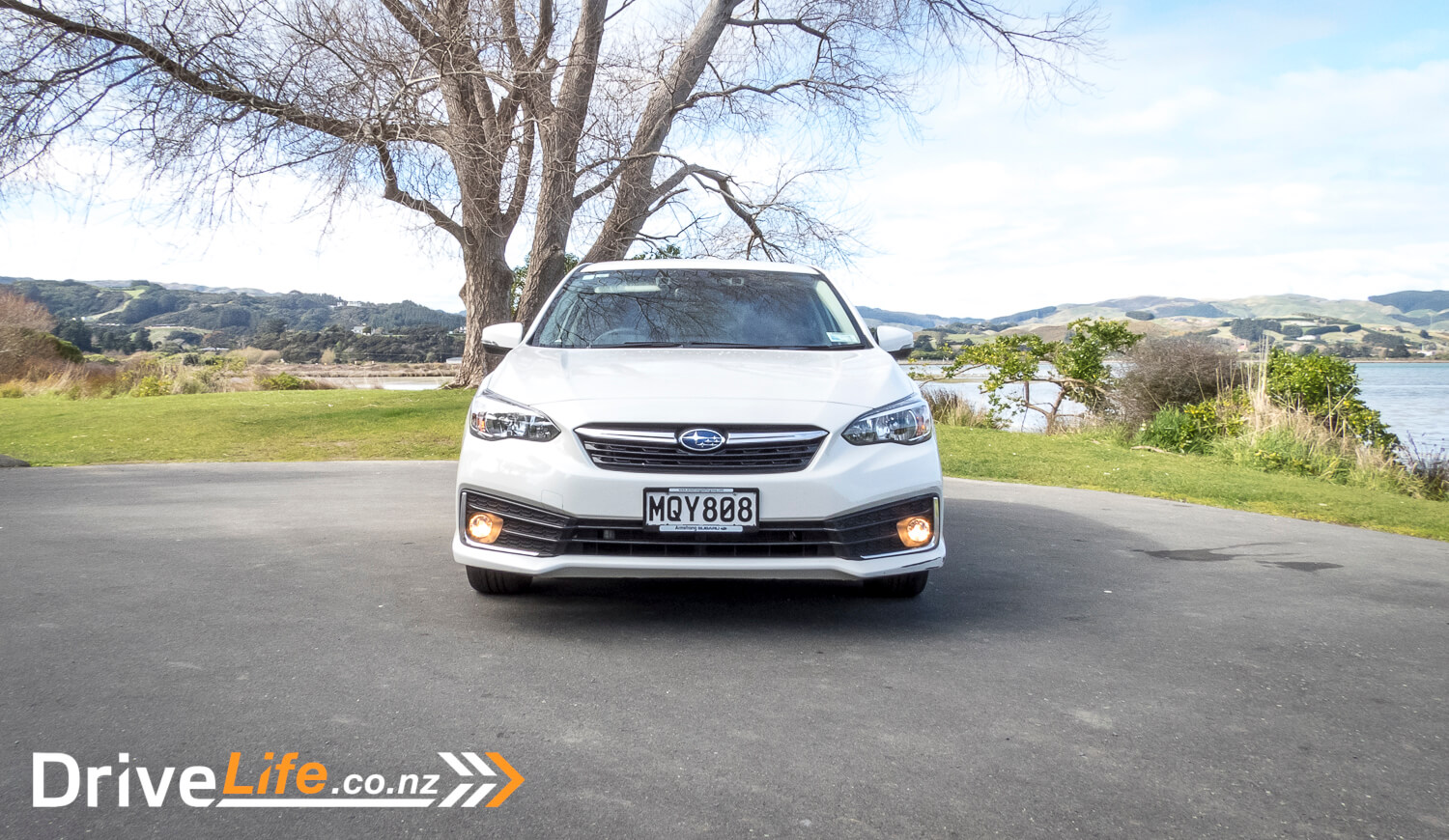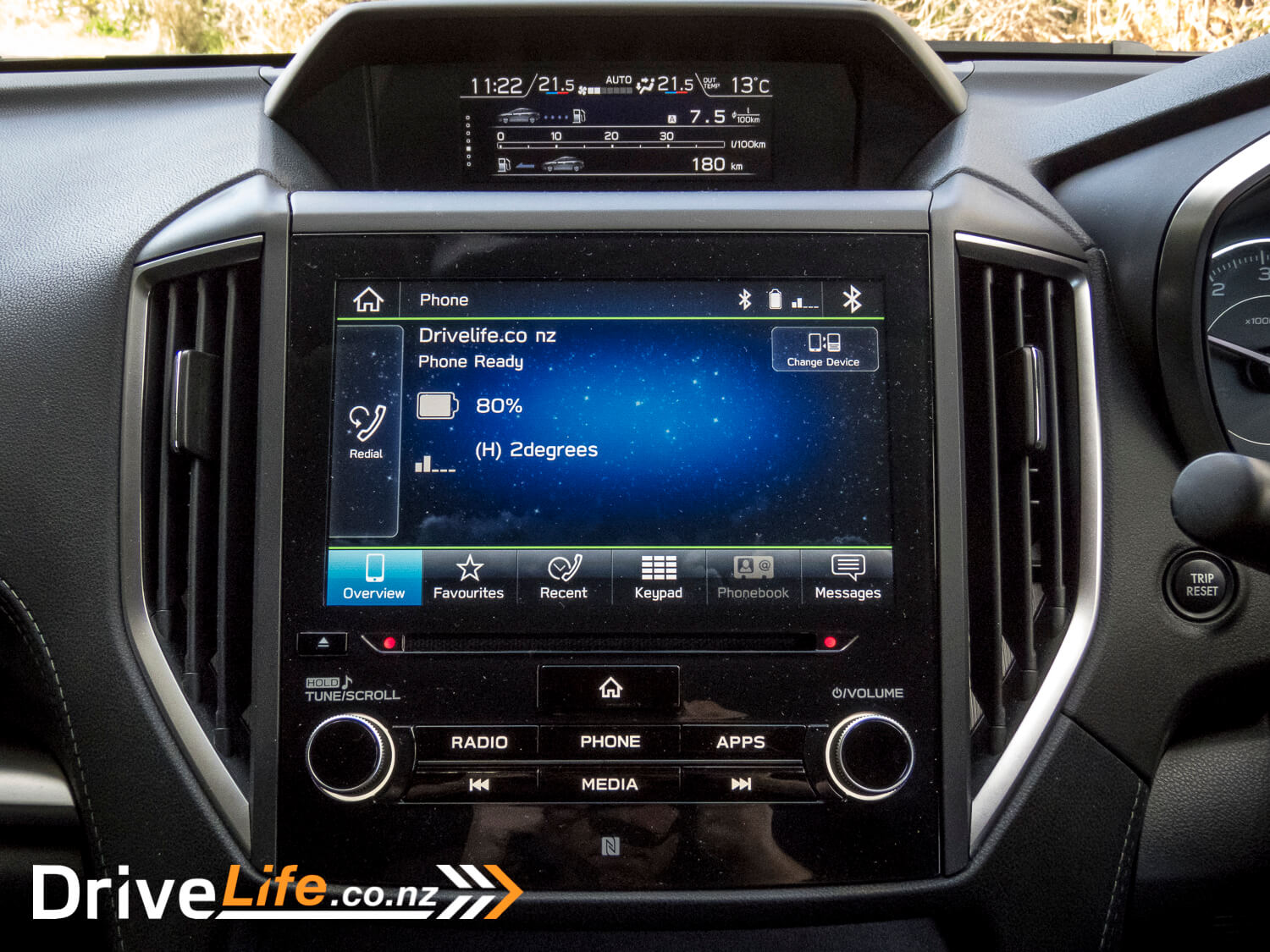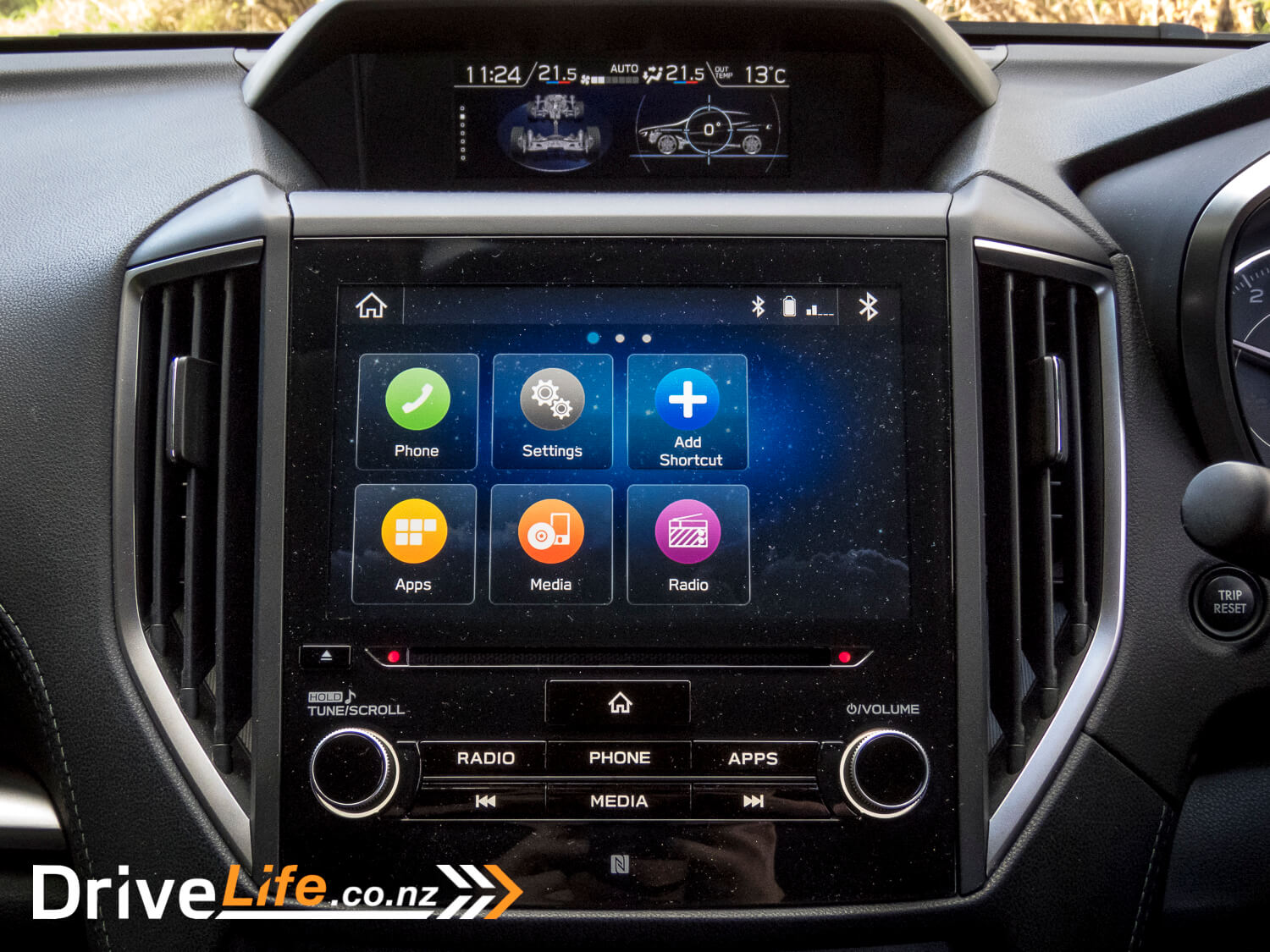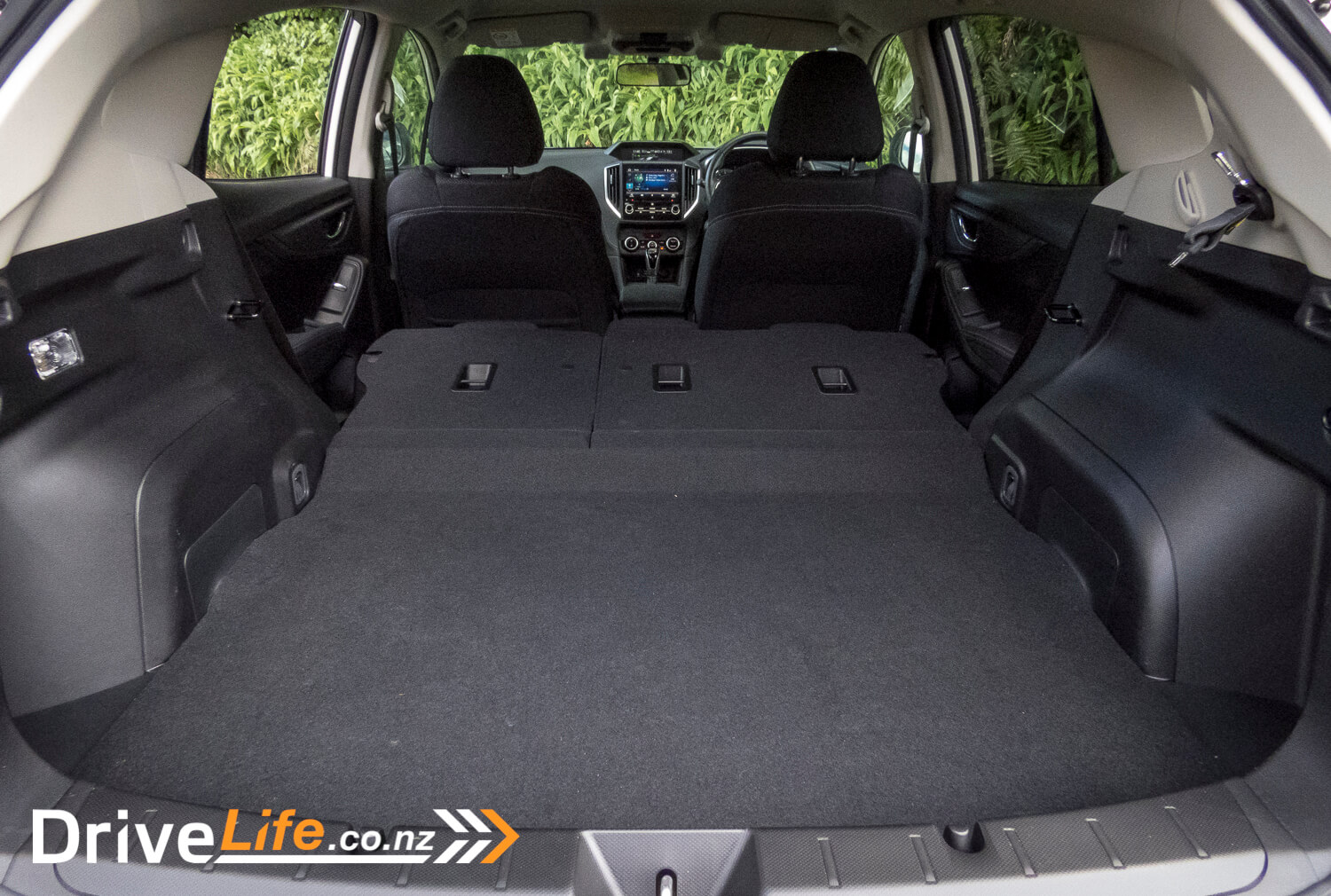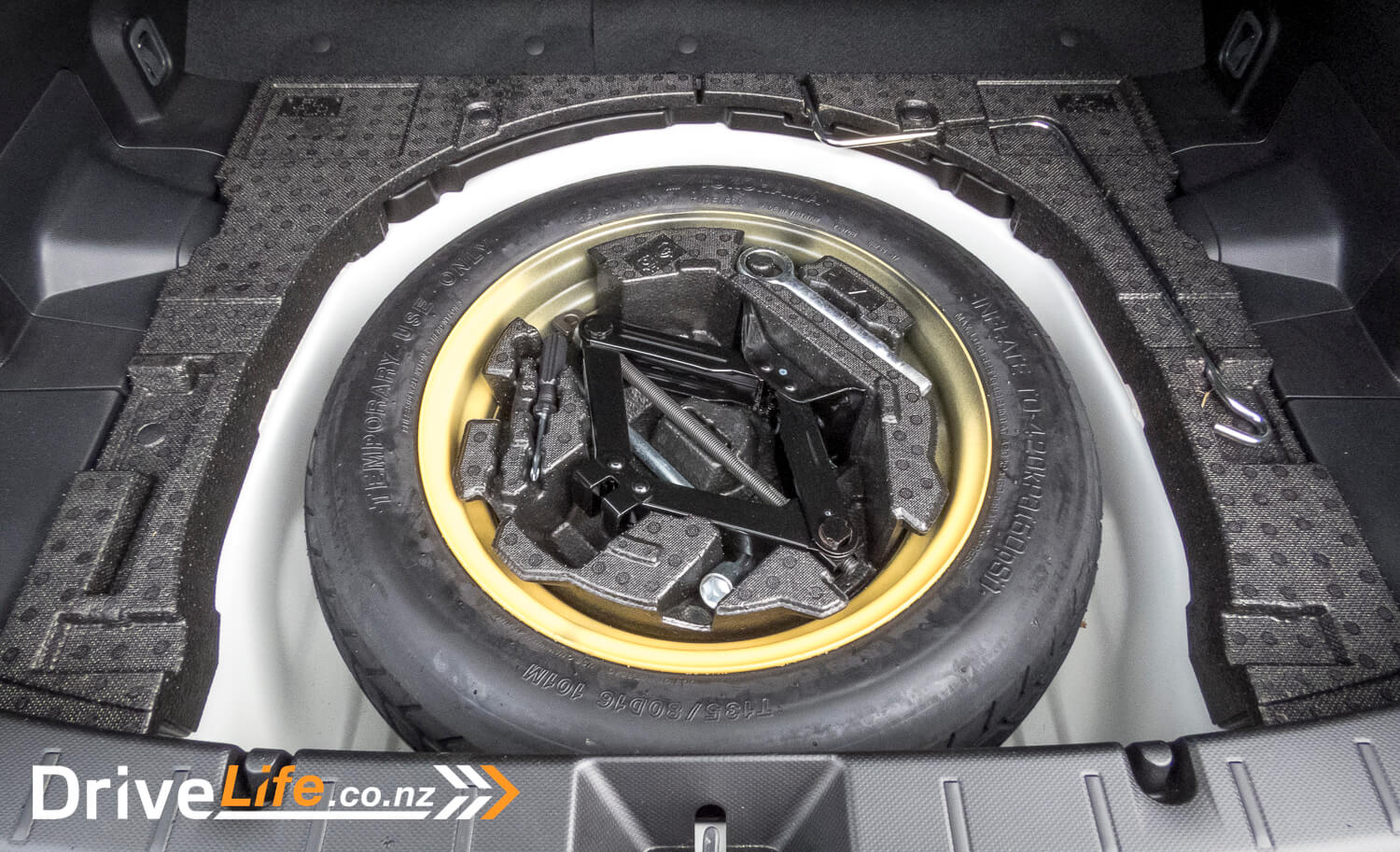The name “Impreza” is among the automotive nameplates which carries quite a legacy. If you’re a petrol-head, the name Impreza can invoke memories of WRC championships, Colin McRae, and muddy vehicles with blue and gold liveries sliding sideways within inches of the spectators’ noses.
Carrying such a reputation, it’s easy to repress the fact that the Impreza started out as, and always has been, an economy hatchback. To avoid misleading the general public, the 2020 Subaru Impreza 2.0i Sport is not a rally car. It’s a car that goes toe-to-toe with the Toyota Corolla.
While the Impreza Sport won’t be winning any rally championships, Subaru claims it has evolved into being the best value small car for Kiwis. We certainly thought highly of the Impreza’s value offerings back in 2017 when we first tested one.
Let’s determine whether the 2020 Impreza can win the value championship for the small hatchback class.
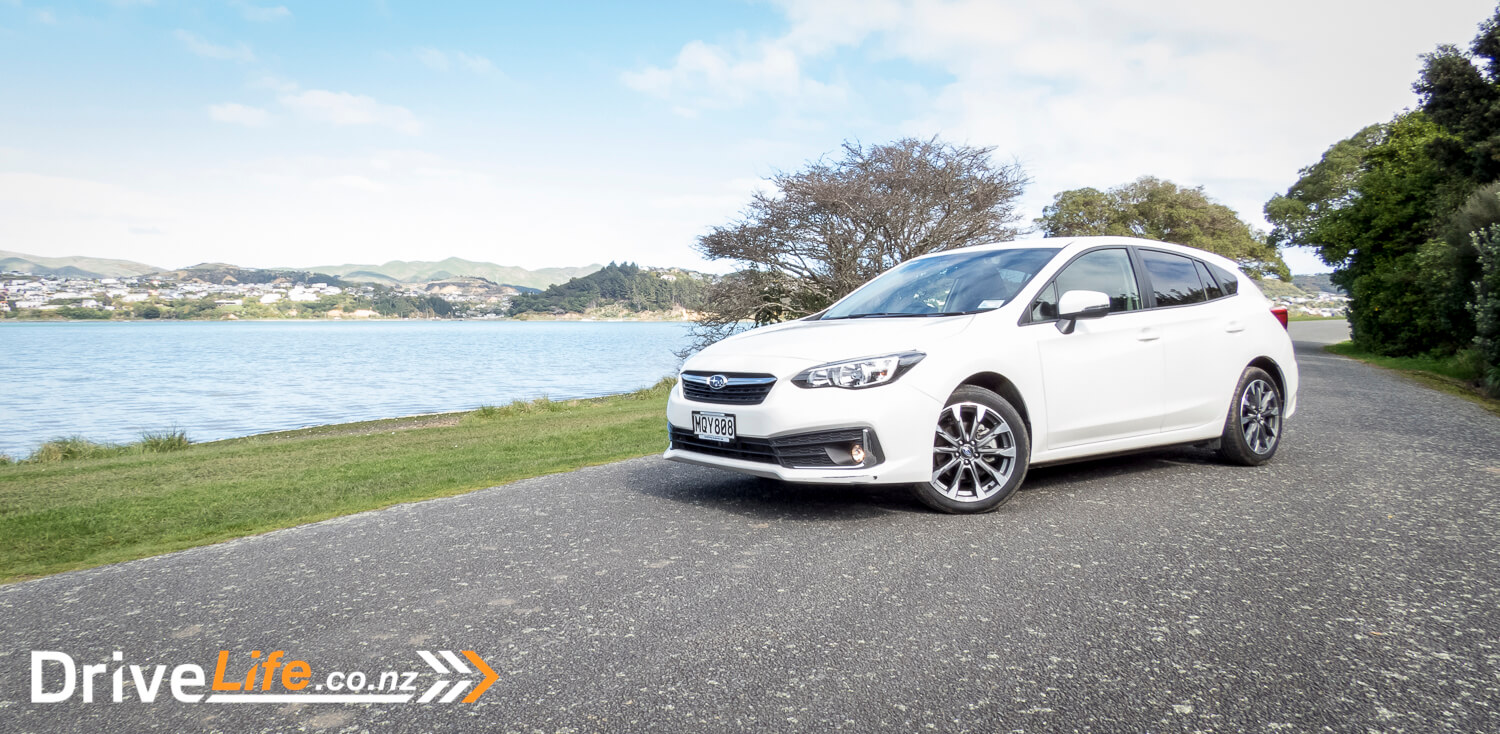
What’s In The 2020 Subaru Impreza Range?
This model is the 5th generation of the Impreza, and is the first one based on Subaru’s global platform.
There’s only one Impreza model offered in New Zealand. This is the Subaru Impreza 2.0i Sport, and ergo, the model of our test vehicle. Subaru does offer the WRX and WRX STi, though these are treated as separate entities from the Impreza range. You can read Drivelife’s review of the Impreza from 2017 here.
New for the 2020 model are 17’’ alloys, a revised grille and bumper design, plus the addition Subaru Intelligent Drive (SI Drive). There’s also been a $2,499 price bump since 2017.
The Subaru Impreza 2.0i Sport has eight different colour offerings, including Crystal Black Pearl, Crystal White Pearl, Dark Blue Pearl, Dark Grey Metallic, Pure Red, Ice Silver Metallic, Quartz Blue Pearl, and Venetian Red Pearl.
You can read up on the full specifications of the Subaru Impreza on the Subaru New Zealand website.

First Impressions Of The 2020 Subaru Impreza 2.0i Sport
‘Playing it safe’ is perhaps an understatement when it comes to the styling of Subaru Imprezas of the last decade. This current 5th generation Impreza is no exception.
The Impreza has a clean and tidy design – and that’s about it.
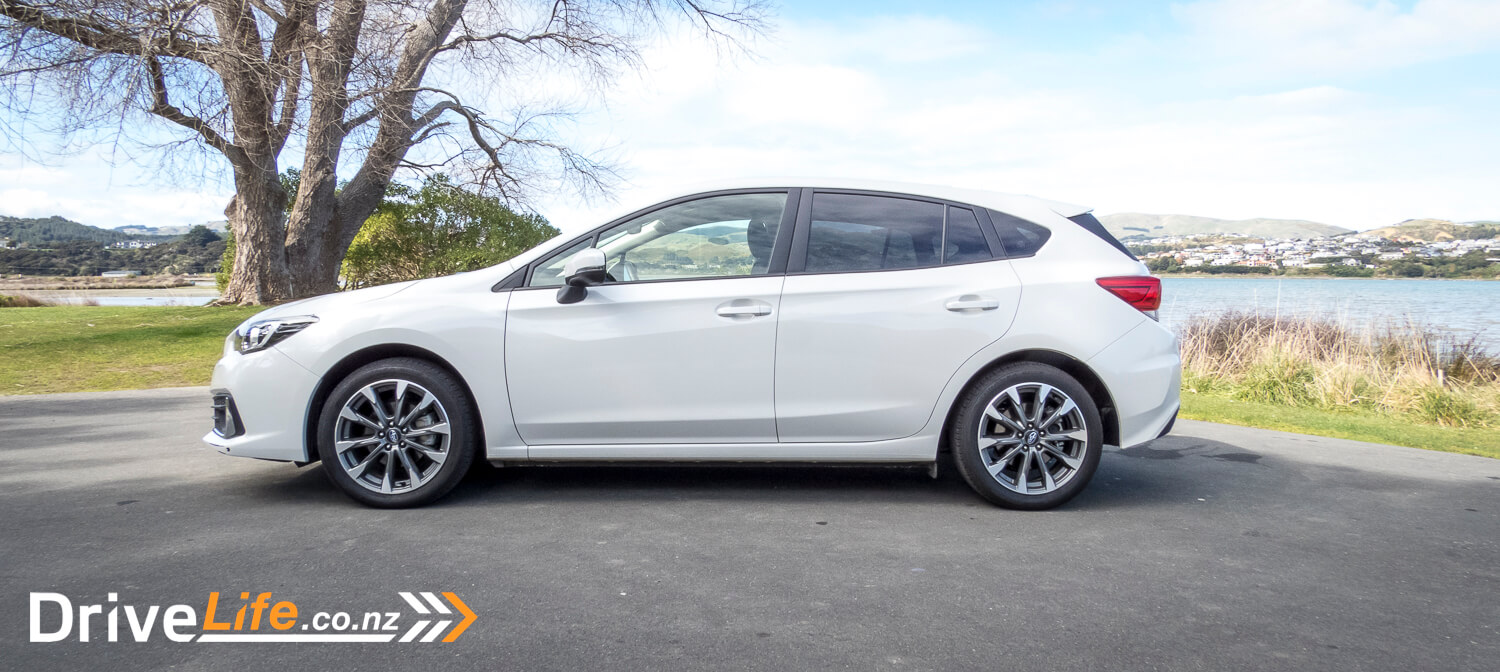
For 2020, the Impreza receives a revised grille and bumper design, plus a fresh set of 17’’ alloy wheels. These changes do slightly modernise the Impreza, but otherwise the differences aren’t substantial.
Overall, there’s not much which stands out on the exterior of the Impreza. It’s slightly disappointing after having driven the Subaru XV , which had a rugged appearance to make it visually more exciting. After the XV, the Impreza leaves an impression which makes you think the accountants got to it first.
Looks are subjective after all, but having grown up with the daring Impreza’s of the 90s and early 2000s, the current Impreza seems like one big stylistic ‘meh’. Subaru probably sells more cars with this approach, but it doesn’t do anything for my nostalgia!
I am being a bit harsh towards the Impreza. The design is not ugly, nor unpleasant in any respect. However, when you consider the good-looking designs of some of the competition, such as the Mazda 3 or even the current-gen Toyota Corolla, the Impreza does seem a bit behind the ballgame. The white colour our test-car came in doesn’t do it any favours either.
Overall, the Impreza is a tidy and inoffensive design. Just don’t expect there to be many directed looks or parking-lot double takes with this Impreza.
What’s The Interior Like On The 2020 Subaru Impreza 2.0i Sport?
Stepping inside, I started scanning through the interior, concerned that the accountants had gotten in here too.
I started with a roll call. 8-inch infotainment with Apple Carplay and Android Auto – check. Dual zone climate control – check. Keyless entry and push-start – check. Subaru’s Eyesight System – check! Wait a sec, there’s actually quite a few goodies in here. Fortunately, it seems the accountants never found the keys.
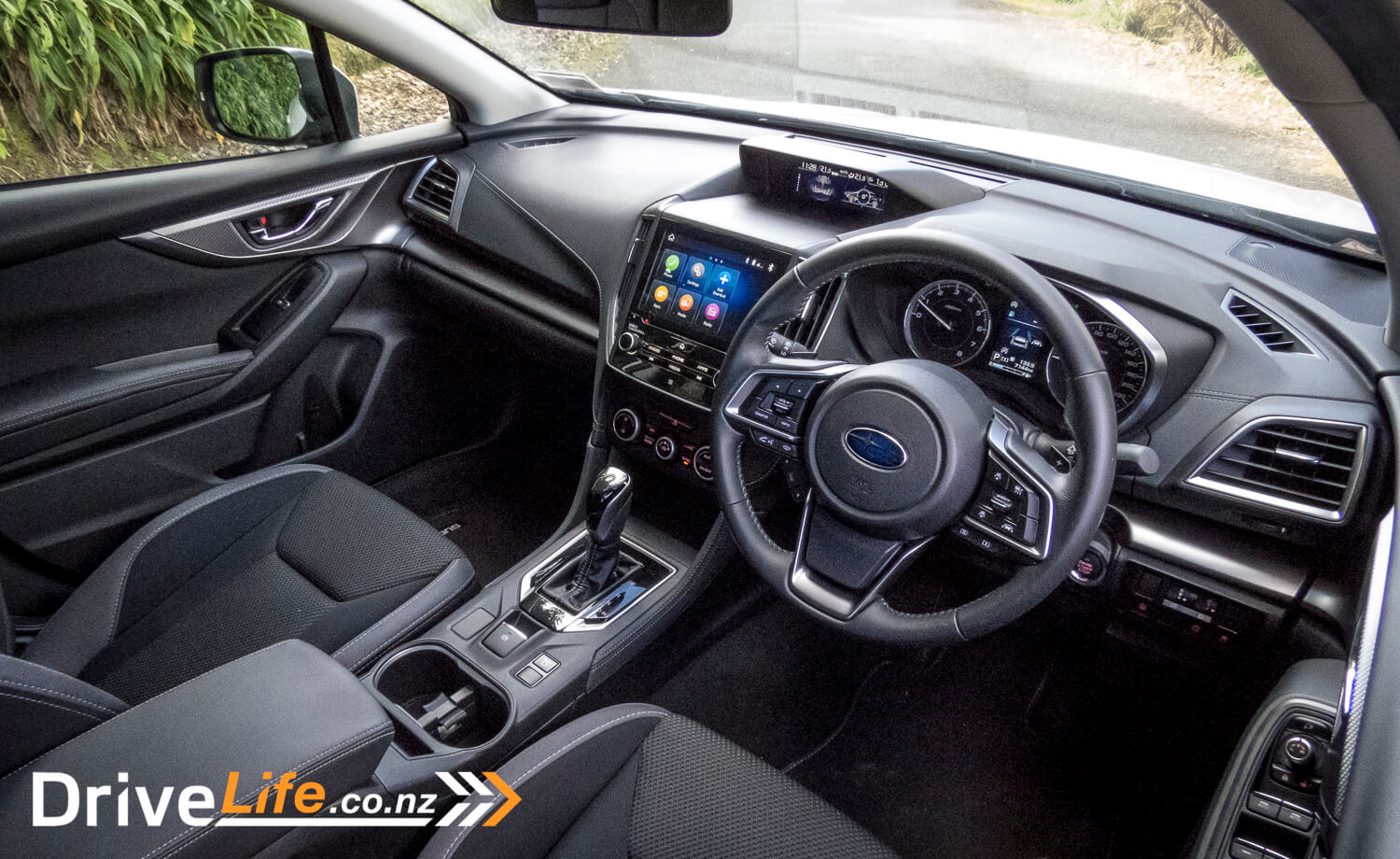
On the inside, the dashboard layout is identical to the Subaru XV. You’ll immediately notice the number of screens for the driver to look at, which are the 8’’ touchscreen infotainment in the centre, a 6.3’’ LCD info display directly above it, and the 4.2’’ LCD display on the instrument cluster. It will all seem busy at first, but you’ll quickly adapt to them.
The Impreza uses Subaru’s Starlink infotainment system. This system is user-friendly, includes several useful hard buttons for the key menus, and much to my delight, has a CD player. The only downside is that the system isn’t the most responsive touch interface when compared with competitors.

The Impreza does miss-out on SatNav, therefore, you’ll need to plug in and use phone-mirroring, i.e. Apple Carplay or Android Auto. Fortunately, there’s 2 USB plugs at the front under the climate controls, plus a couple in the glove box for passengers, with little channels for the cables to sit in.
The configurable 6.3’’ multi-function display above the infotainment shows a variety of information. You get the same 8 read-outs from the XV, including the fuel economy and range, the active safety systems, plus vehicle pitch and tilt, and so on. Most of the important information can also be displayed on instrument cluster display, meaning that this screen isn’t exactly important. Overall, the screen is a bit of a gimmick, but a cool one nonetheless.
One downside to having all these displays is that the interior is quite bright during night-time driving. There’s a dial to adjust the brightness on the driver’s side, but I feel that Subaru could auto-dim the displays just a fraction more.
Being the same dash design, many of the same materials are carried over, including a lower aluminium coloured trim piece which links across to the door panel, plus some plastic carbon-fibre styled trim round the door handles. The Impreza does miss out on some of the premium touches, such as some brushed metal finishes and the contrast orange stitching throughout the cabin. It’s visually not quite as inspired as the XV, but their absence is hardly a deal breaker.
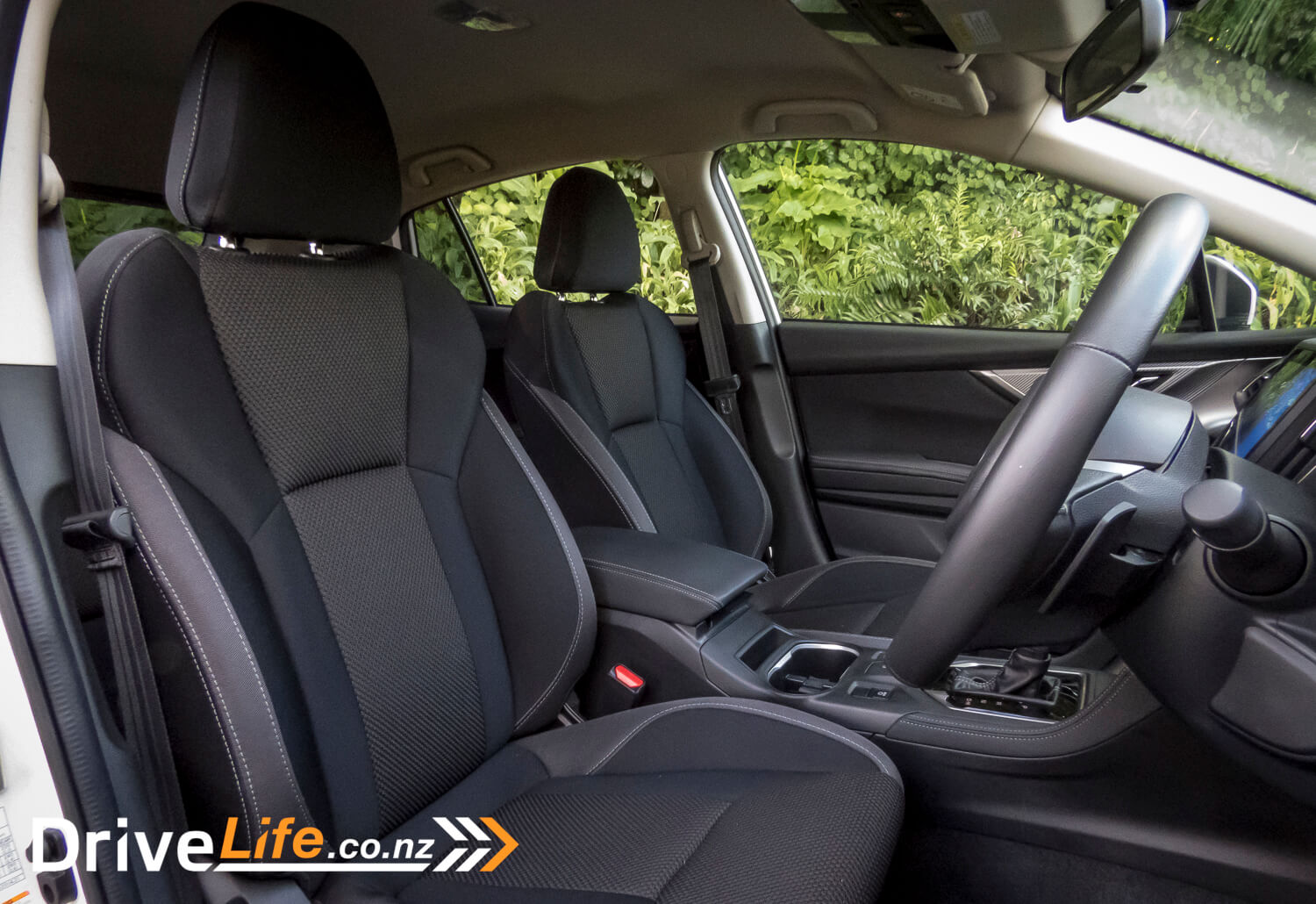
The seats are Subaru’s usual offering for the Impreza and XV range. I personally think these seats are excellent for their class. They’re comfortable and offer excellent lumbar support. You can also dial in the driving position just right too. I’ve driven some long distances in these seats and can definitely vouch for them.
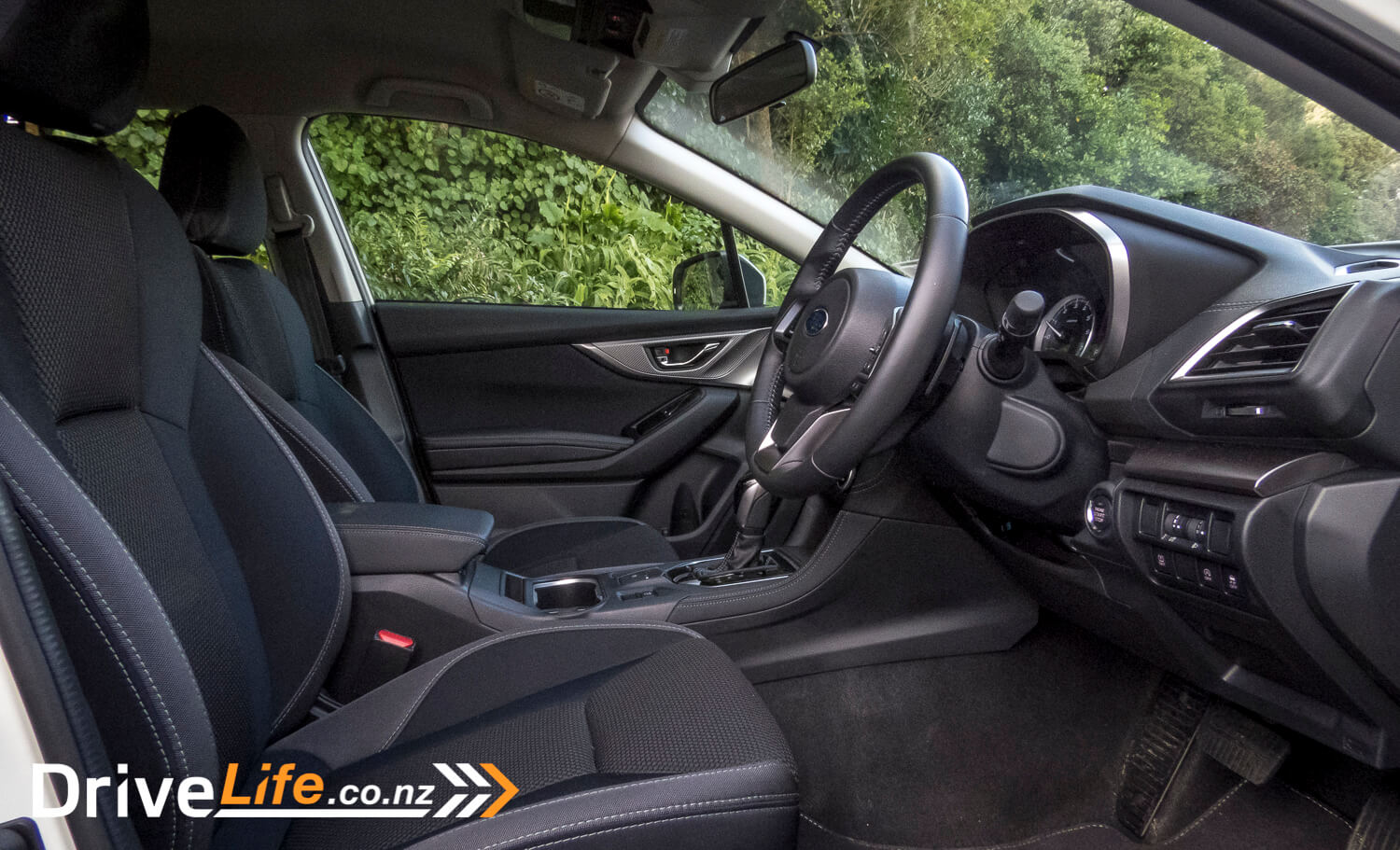
The seats are layered in Subaru’s ‘premium cloth’, which may sound pretentious, but the material is actually pretty darn nice. The material is soft and has a good density to it, plus Subaru has made the effort to give you some contrasting fabric colours and designs, which adds a premium touch. You certainly won’t feel short changed with the cloth seats, and as far as I’m concerned, ‘premium cloth’ is worthy of the name.
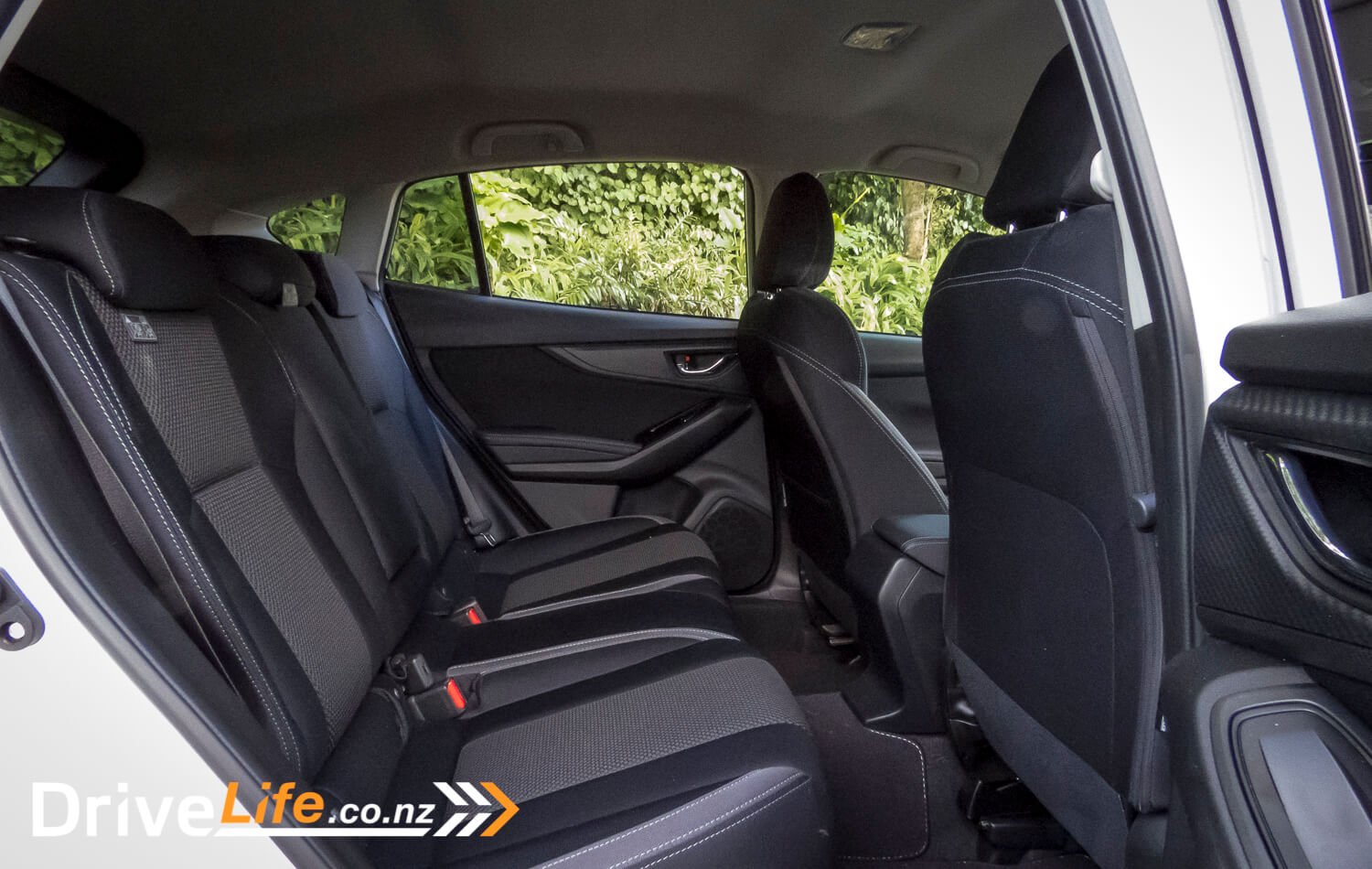
Rear passenger space is another strong point of this platform. Rear passengers get an impressive amount of leg and headroom in the Impreza. Boot space is also a respectable 345L with seats up, 795L seats down. Surprisingly, it’s actually more boot space than you get in an XV, which offers 310L seats up, 765L seats down.
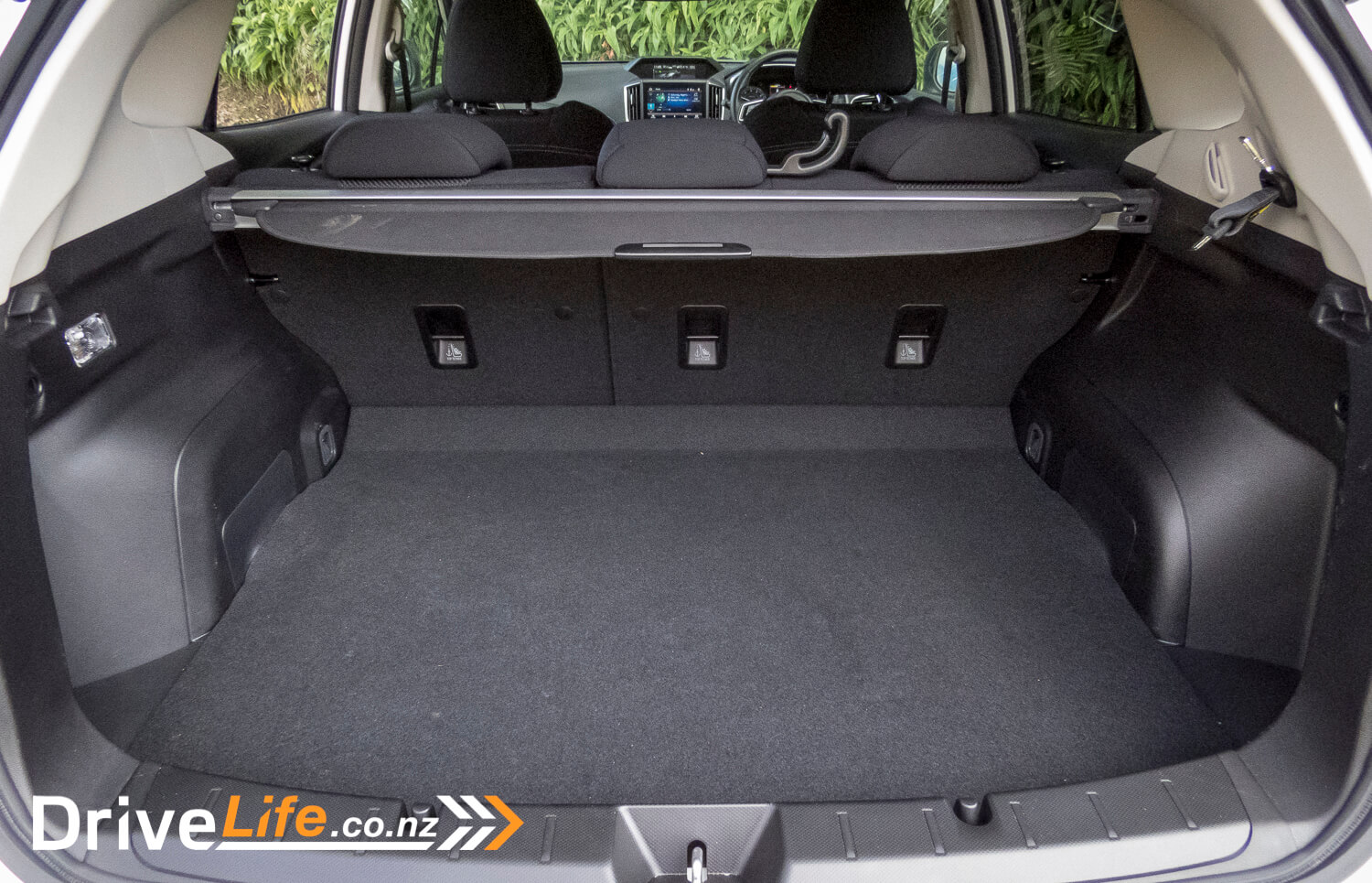
Being virtually the same interior design, the Impreza imports the usual quirks over from the XV. The interior first quirk is some of the awkward button placements.
Subaru has their usual controls to switch off the driver assistance systems down on the right-hand side of the driver. The exception is the controls to switch-off the forward collision systems and lane departure warnings, which are mounted on the roof, up near the interior lights. This placement has always confused me.
You may also find there’s a bit of a learning curve with all the steering wheel controls when you first drive the Impreza. There were already a lot of buttons on the steering wheel in the XV, and the Impreza uses the same steering wheel, whilst adding two more buttons for the SI drive (more on this later). This means there’s 12 buttons and 2 switches on the steering wheel, before you include the 3 buttons on the stalk mounted to the steering column.
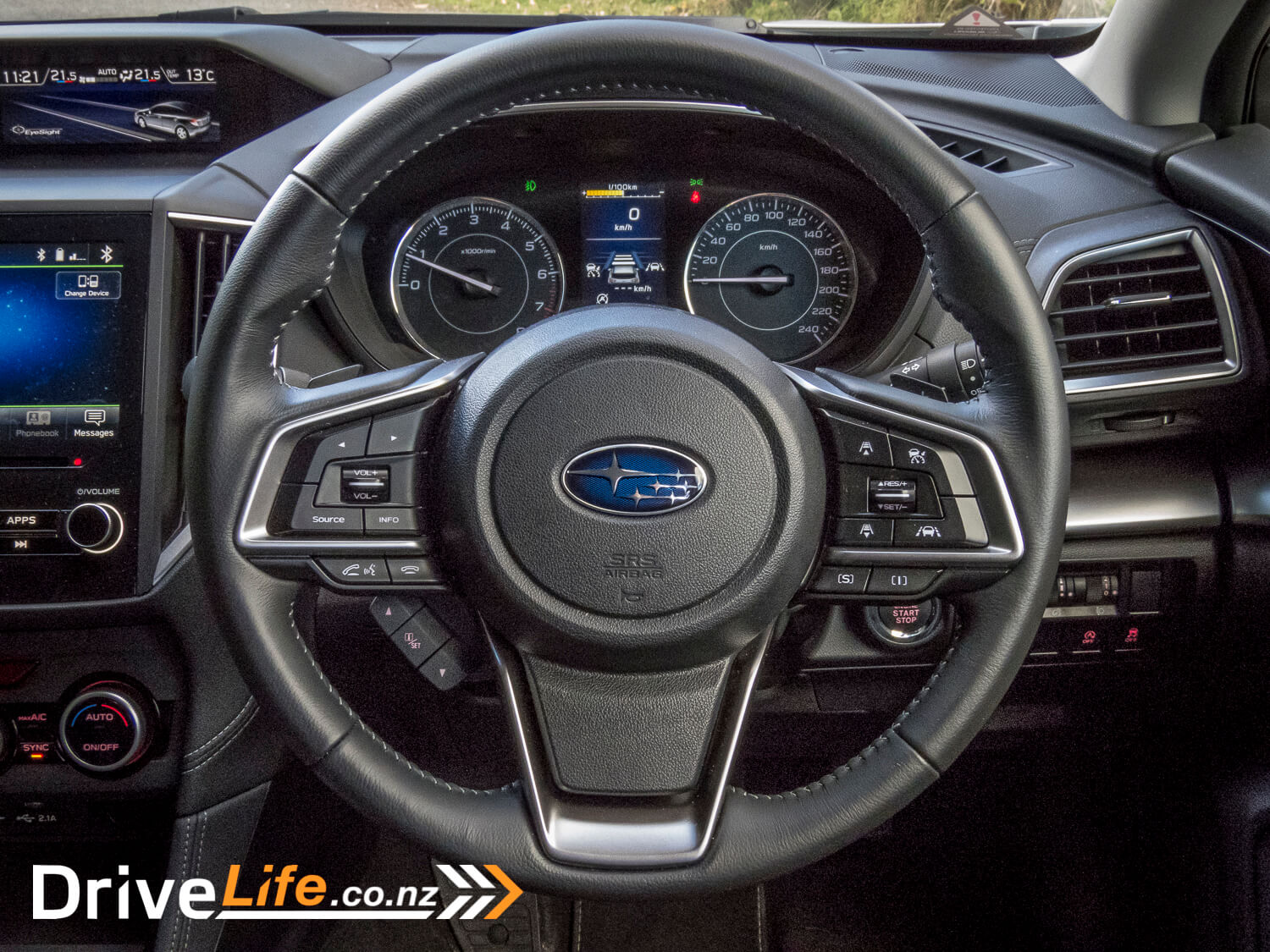
On the subject of buttons, I think the controls for the drivers displays are incorrectly arranged. For example, the info button on the steering wheel controls the display above the infotainment, while the steering column buttons control the driver’s display. The steering wheel button falls better to hand and should arguably change the display which gets greater usage, which is the instrument display. As mentioned earlier, the 6.3’’ display doesn’t show anything vital, nor anything which requires regular driver interaction, so why Subaru prioritises it with a steering wheel button is a bit confusing.
My final gripe is a small one. The stereo seemed only average to my ears. In Rob Clubley’s 2017 review, he found the stereo to be one of the Impreza’s strengths. I’m unsure whether anything’s changed, but this appears to be one of the ‘each to their own’ moments.
Overall, I was left pleasantly surprised by the interior of the Impreza. I was expecting the interior to be much more stripped out for the price, yet they’ve retained several features inside, and it’s all executed to Subaru’s usual high standard. The Impreza proved me wrong, and I’m happy it did.
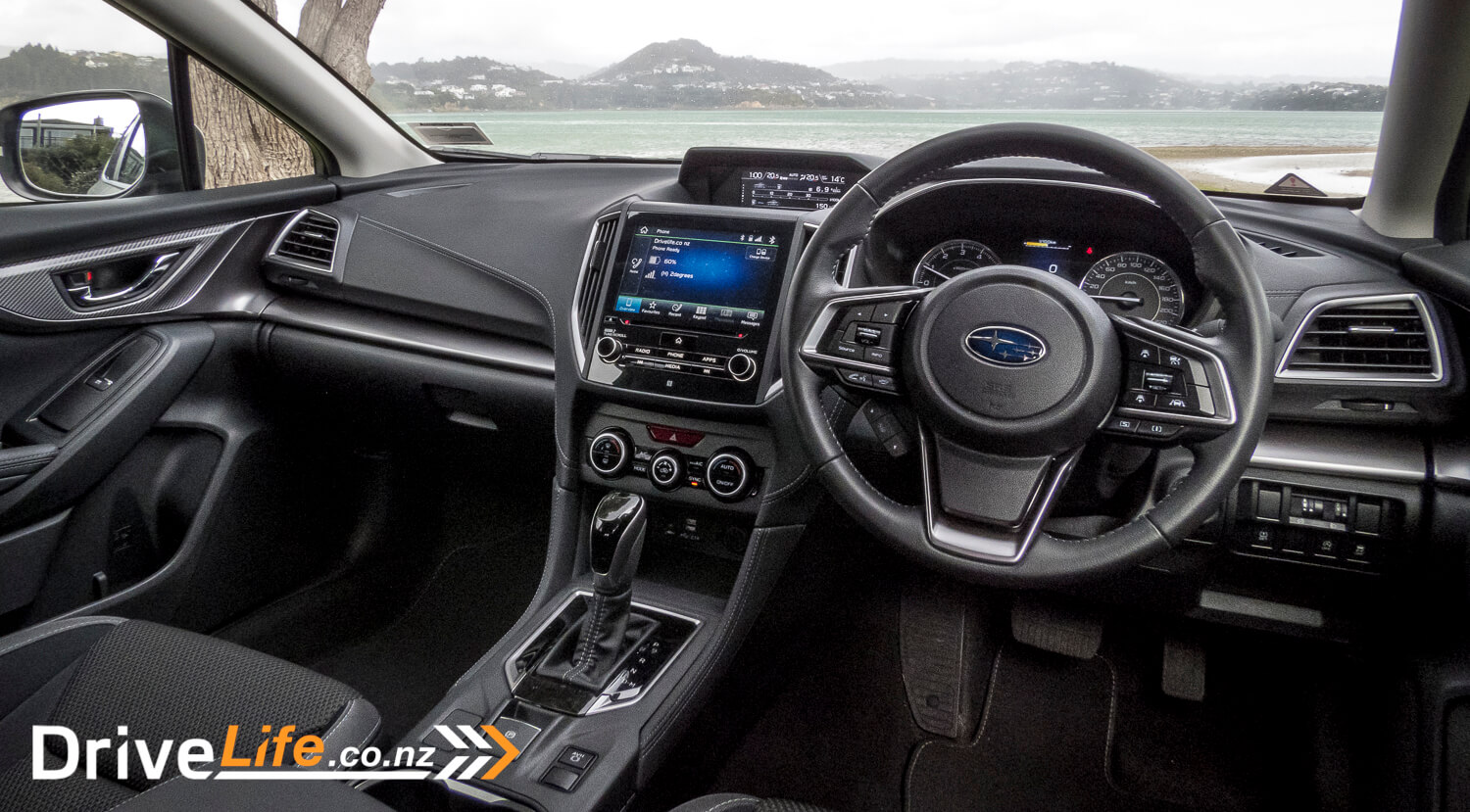
What’s The 2020 Subaru Impreza 2.0i Sport Like To Drive?
Although the Impreza has changed substantially through the years, the core ingredients have remained the same. The means you still get all-wheel drive and a boxer engine.
Powering the Impreza is a 2-litre 4-cylinder boxer (flat) engine, developing 115kW of power and 196Nm of torque. This powertrain is paired to Subaru’s Lineartronic CVT transmission.
This engine and gearbox combination is also shared across the XV range.
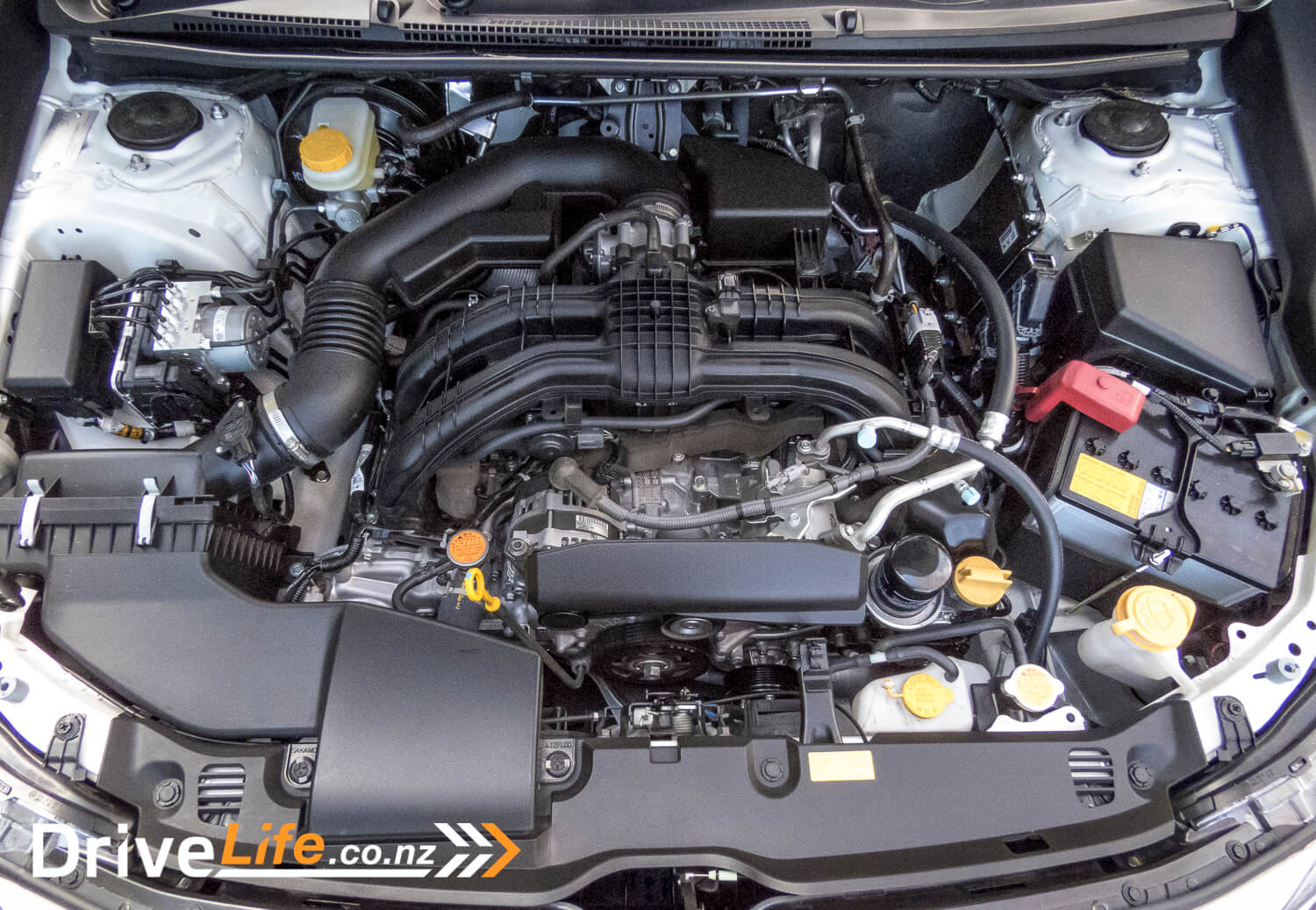
When I tested the XV Premium, it performed the daily grind and travelled fully-laden up to Mount Ruapheu. For all of this, the performance from the engine was adequate. There was a decent amount of low-end for daily driving, but the engine did feel slightly laboured when pushed high up into the rev-range. The engine also makes a fair amount of noise under acceleration too, which doesn’t audibly match the speed you’re travelling.
It’s a similar, yet slightly different story with the Impreza. The powertrain still has the same characteristics, but the Impreza is roughly 70kgs lighter than the XV, and sits lower to the ground. Unsurprisingly, the Impreza does feel a lot nimbler than the XV did.
Subaru’s Lineartronic CVT transmission is definitely among one of the better CVTs out there. It’s not slow off the line, nor does it hang between gear changes. The Impreza’s steering is also highly responsive, and like the XV, the brake feel is surprisingly good.
Altogether, these qualities make the Impreza feel like it has quite a bit of poke at urban speeds, even if there’s still not much power at the top-end. I wouldn’t call it quick, but it’s not going to be lagging behind the competition.
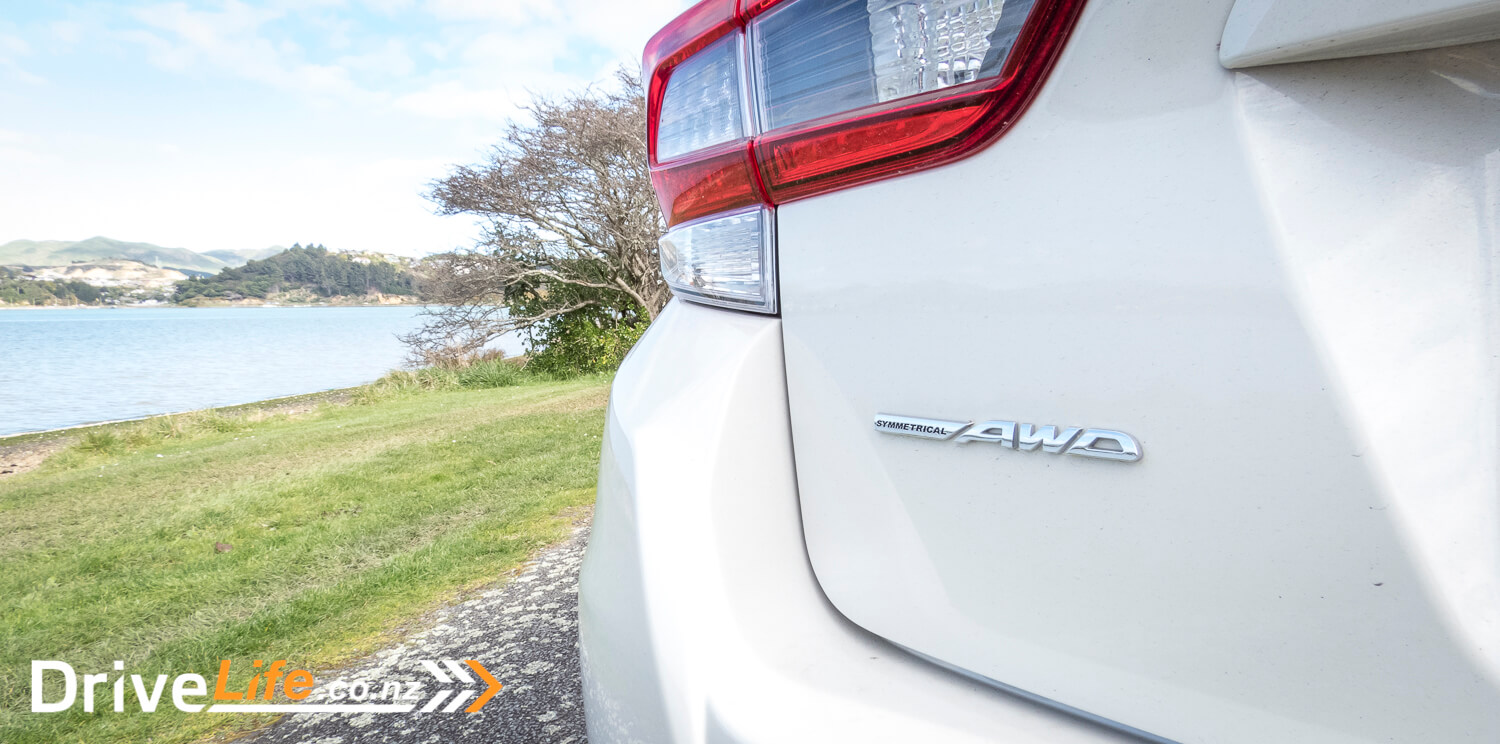
On the subject of the competition, where the Impreza stands-out from the rest of the hatchback crowd is with its all-wheel drive system. Like the rest of the Subaru range, the Impreza gets Subaru’s reputable all-wheel drive set-up. Compared with other hatches, the driver will notice the grip the all-wheel drive system offers.
The ride in the Impreza is also good for the hatchback class. The suspension is pliant enough to manage bumps on the open road, yet will allow the Impreza to maintain composure through a quick corner. Road noise is also reasonably low at urban speeds, likely due to the new 17’’ alloy and tyre choice.
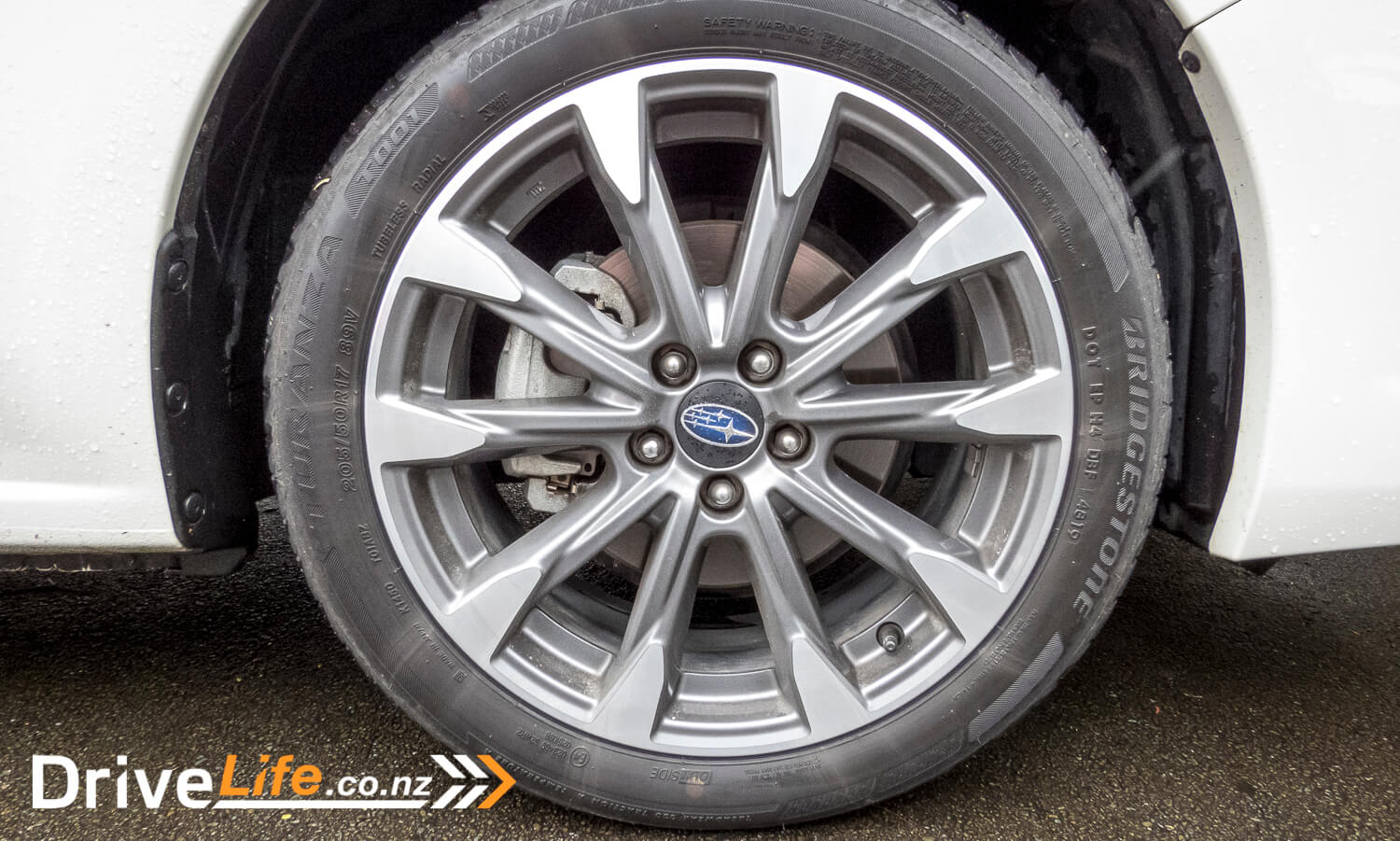
A key difference for the 2020 model year is the addition of Subaru Intelligent Drive, or SI drive. On the steering wheel, you have two buttons; an ‘S’ for Sport and an ‘I’ for Intelligent. Sport is self-explanatory, and Intelligent is for optimising fuel economy. Subaru claims that it regulates the engine control unit, the electronic throttle and the transmission control unit. Flicking between modes, a little power curve graphic will appear on the instrument display. The S mode graphic shows a curve with a greater pitch to indicate greater power delivery lower down.
In practise, switch it into S mode, and you’ll notice that the engine will perk-up a bit and the transmission will hold the revs a bit longer. However, I can’t say it made a considerable difference performance wise. I spent most of the time driving around in Intelligent, because this is what I aspire to be one day. Joking aside, there was no real need to switch it over at any point for daily driving.
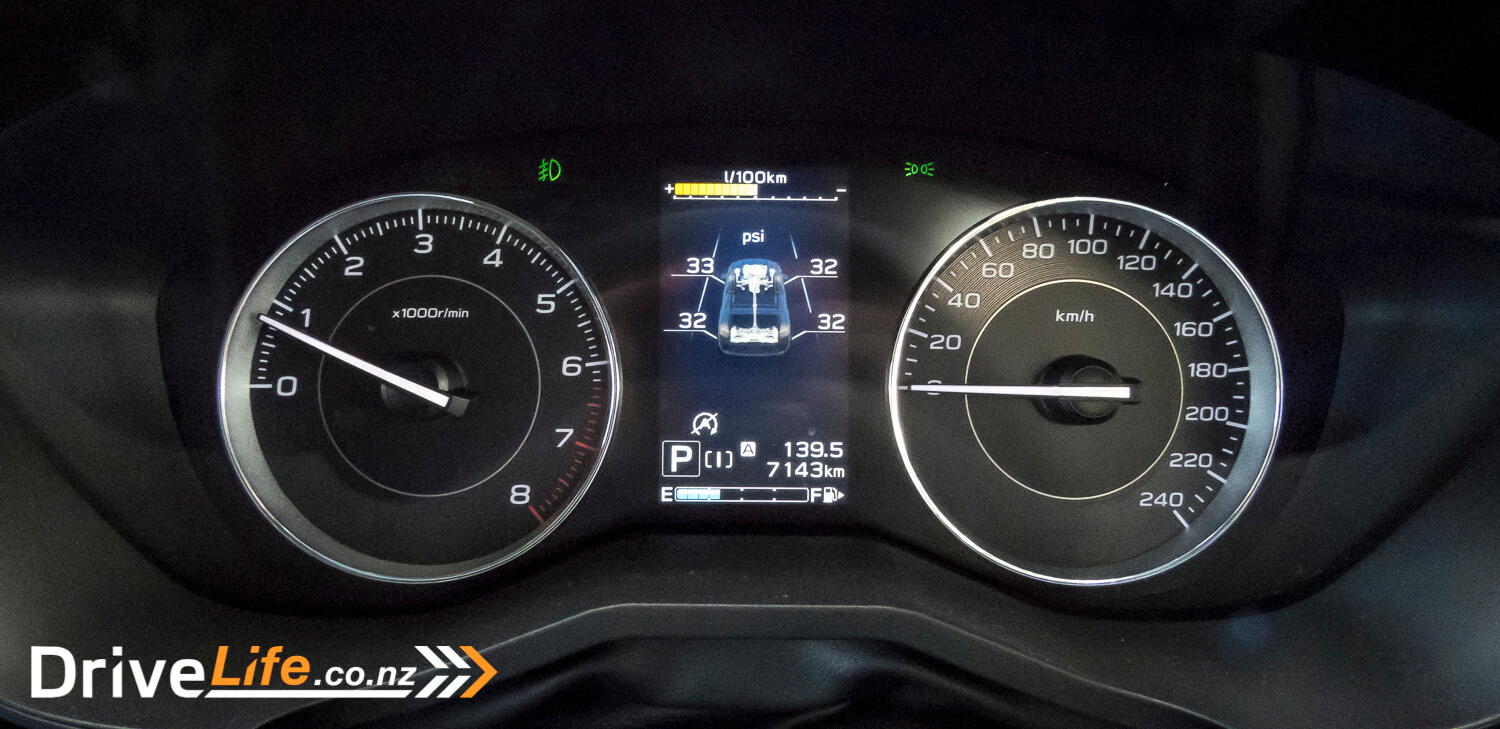
During our time with the Impreza, we achieved an average of 6.9L/100kms, which is quite close to the combined average of 6.6L/100kms. A good portion of this average was motorway mileage, meaning our result was a fair bit higher compared with Subaru’s extra urban estimate of 5.6L/100kms. On shorter, urban journeys, it was common to see it flick up into the low-mid 7L/100kms range. Overall, it’s reasonable fuel economy from a 2-litre all-wheel drive.
The 2020 Impreza also comes equipped with Subaru’s Eyesight Safety system, which operates the adaptive cruise, lane departure warning, pre-collision braking, sway warning, and throttle management. Subaru calls it ‘Eyesight’ because it uses a series of cameras mounted at the top of the windshield, as opposed to forward facing radars like most other manufacturers.
My first experience of the Eyesight system was when testing the XV Premium, and overall, it left a good impression on me.
The radar cruise control has smooth and gradual inputs, and will operate down to stop. A tap of the throttle or a flick of the steering wheel switch will get it moving again.
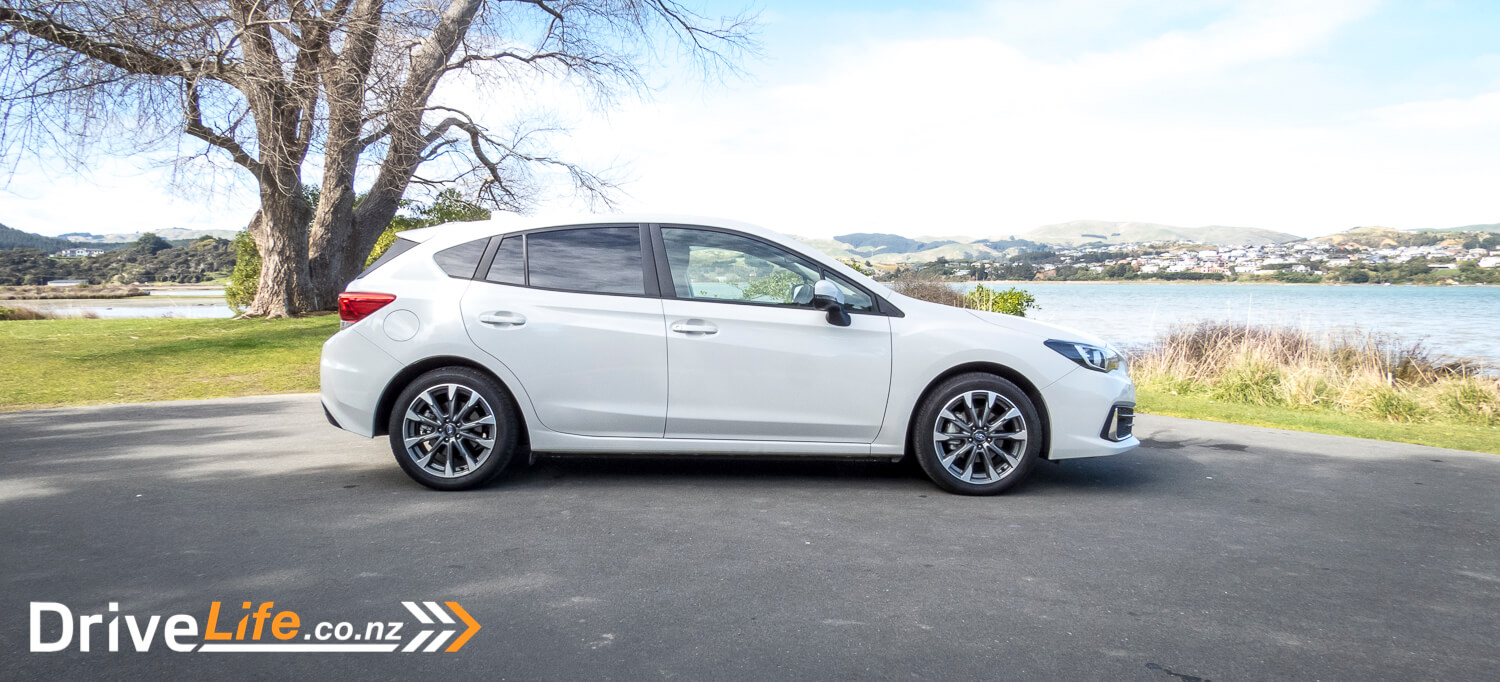
I’m also a fan of Subaru’s approach with the lane keep assist. The feature doesn’t start by default, instead, if you want it on, you need to press a button on the steering wheel. I prefer this set-up to others, as lane keep assist systems can sometimes be a tad overbearing on some of our open roads. When operating, the system works well, even if a little nudgy sometimes.
During our time with the Impreza, there were a couple of times when the forward collision system warned of an obstacle immediately in-front of me, despite it being a clear road. It’s normal for any autonomous system to have their false positives, but our test vehicle seemed to do it more often than I had previously experienced from Subaru’s system. Perhaps a calibration issue?
Aside from this specific issue, the Eyesight system works well. There is one quirk of the system, where it will beep every time it locks onto a new vehicle when operating the radar cruise control. You also can’t switch it off either, which may eventually get on the nerves of some drivers.
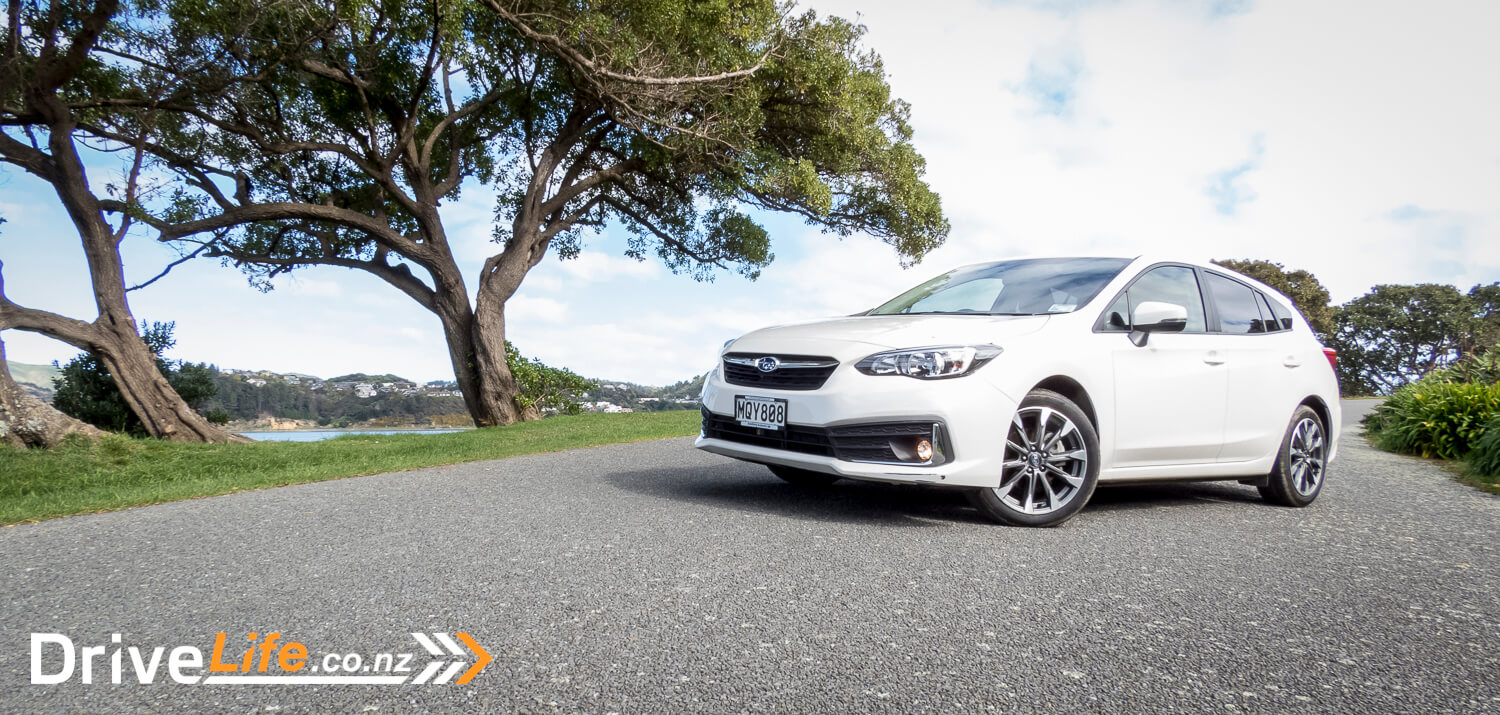
On the subject of quirks, Subaru’s start-stop system is still a bit rough around the edges. As noted in Rob’s review in 2017, the re-start isn’t as instantaneous and feels quite laboured compared with some of the systems we’re now seeing in 2020. I also found that the system sometimes wouldn’t activate at all when you expected it to. I wouldn’t exactly call this a huge drawback, rather just something to be used to.
On a final note, when I opened up the bonnet, I saw plenty of space around the engine. This means the unconventional boxer engine should be easier to work on. The oil filter is almost right in front of you at the top of the engine too. All of these measures should translate into cheaper service costs. Historically, Subaru’s have been more expensive to perform routine maintenance on due to the engine layout. Ask any old Subaru owner about a spark plug change, and you might see them wince. It appears that Subaru has been trying to improve in this space, making the Impreza seem cheaper to run over the long term.
What’s The Competition For The 2020 Subaru Impreza 2.0i Sport?
| Brand/Model | Engine | Power (kW)/Torque (Nm) | Economy, L/100km (claimed) | Seats | Boot Space, Litres | Towing Capacity, Kg | Price |
| Peugeot 308 Allure | 1.2-litre 3-cylinder Turbocharged Petrol | 96/230 | 5.1 | 5 | 435 | – | $36,990 |
| Mazda 3 GSX | 2.0-litre 4-cylinder Petrol | 114/200 | 6.2 | 5 | 295 | 1200 | $36,895 |
| VW Golf TSI Comfortline | 1.4-litre 4-cylinder Turbocharged Petrol | 92/200 | 5.5 | 5 | 380 | 1400 | $36,490 |
| Hyundai i30 2.0 Hatch | 2.0-litre 4-cylinder Petrol | 120/203 | 7.4 | 5 | 395 | 1300 | $35,990 |
| Skoda Scala Sport TSI | 1.5-litre 3-cylinder Turbocharged Petrol | 110/250 | 5.7 | 5 | 467 | 1250 | $34,990 |
| Toyota Corolla SX | 2.0-litre 4-cylinder Petrol | 125/200 | 6.0 | 5 | 208 | 1300 | $33,490 |
| Honda Civic (SX) | 1.8-litre 4-cylinder Petrol | 104/174 | 6.6 | 5 | 414 | 800 | $32,990 |
| Subaru Impreza 2.0i Sport | 2-litre Horizontally-opposed Boxer 4-cylinder Petrol | 115/196 | 6.6 | 5 | 345 | 1200 | $32,490 |
| Kia Cerato LX | 2.0-litre 4-cylinder Petrol | 112/192 | 7.4 | 5 | 428 | 1100 | $31,990 |
| Citroen C3 Shine | 1.2-litre 3-cylinder Turbocharged Petrol | 81/205 | 5.2 | 5 | 300 | 450 | $29,990 |
